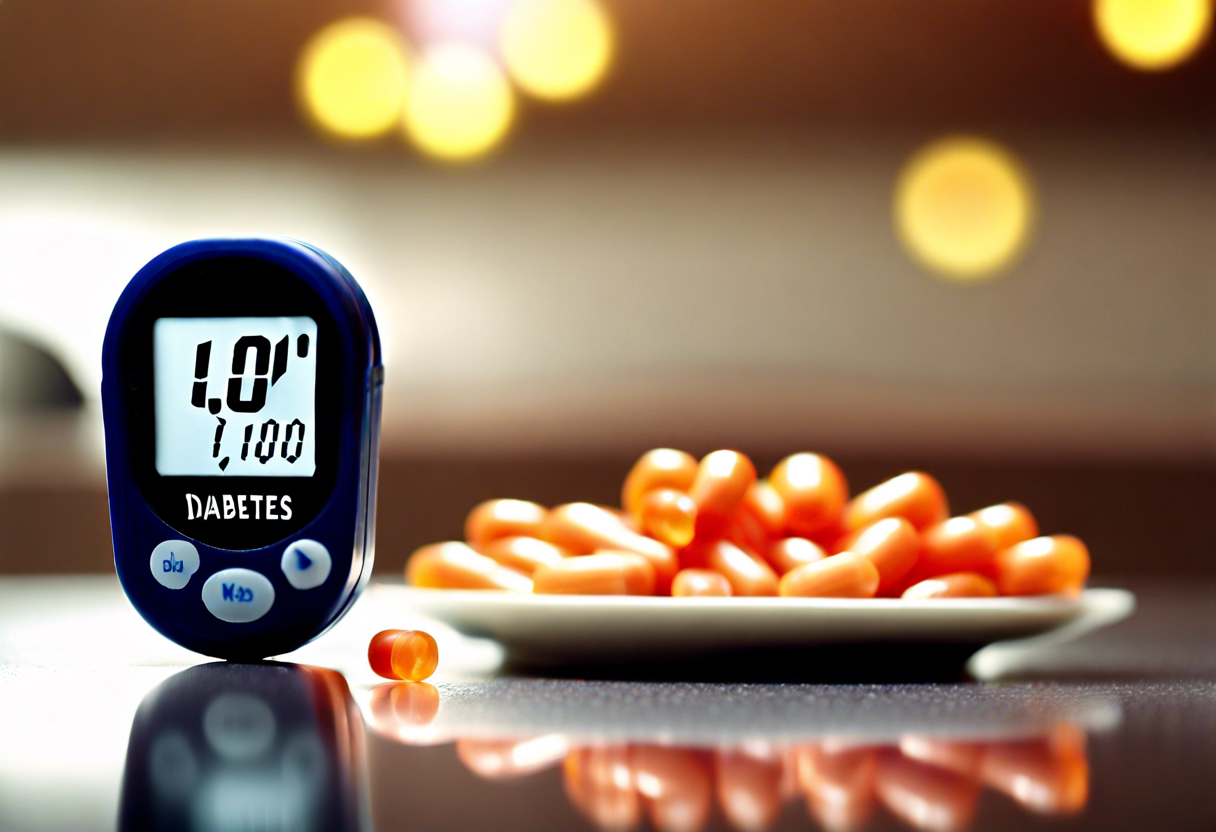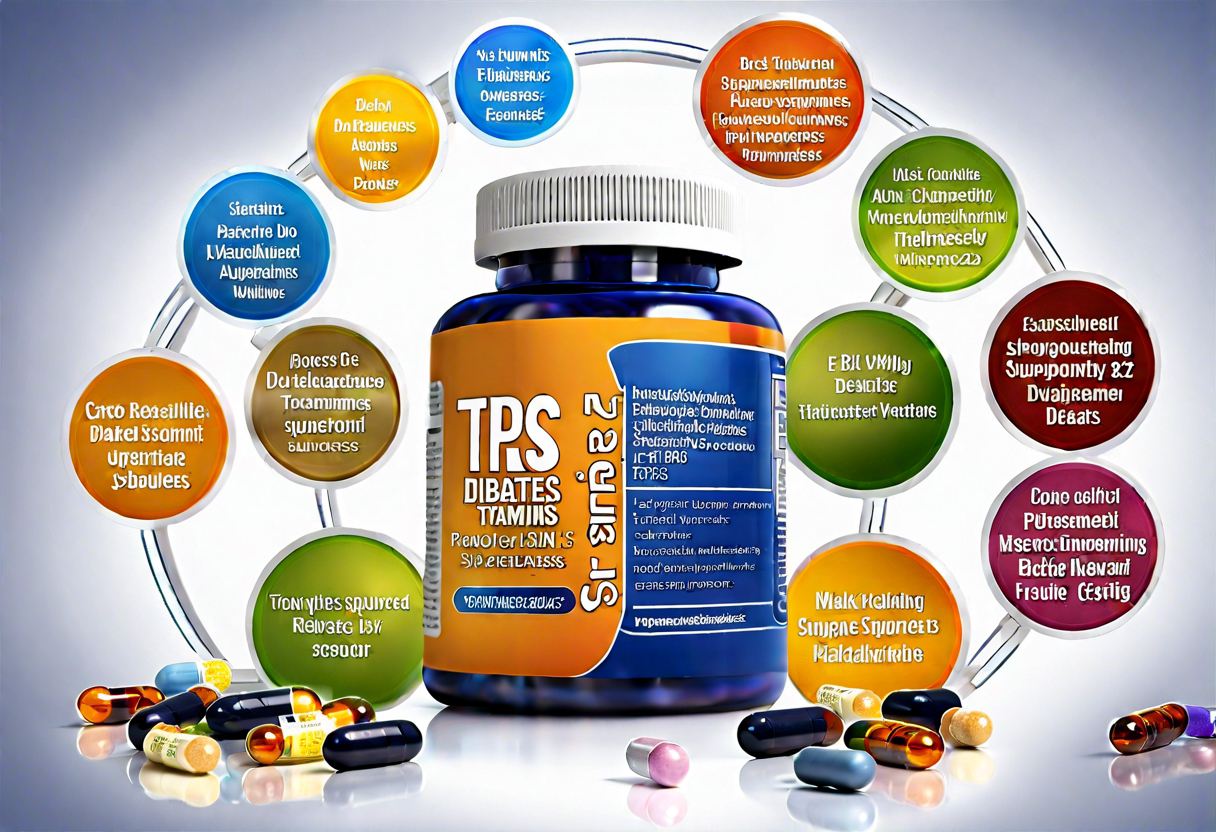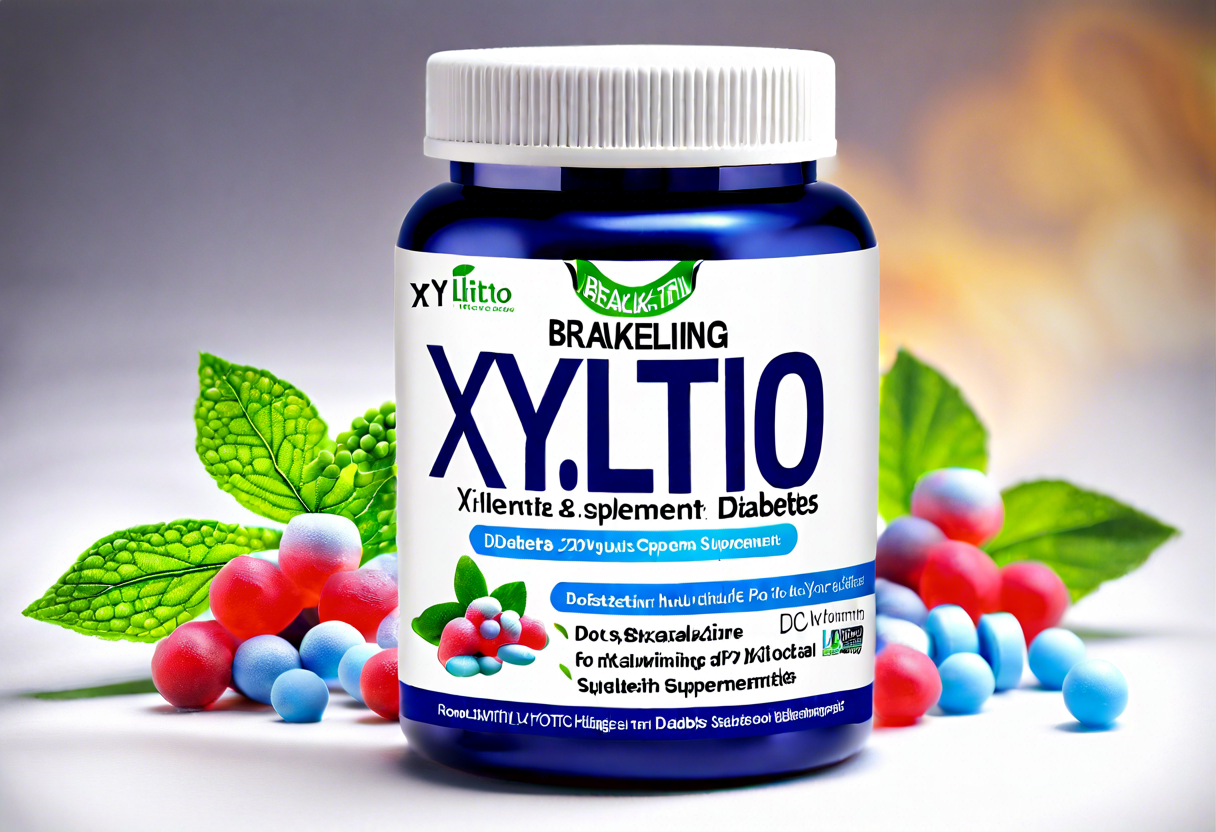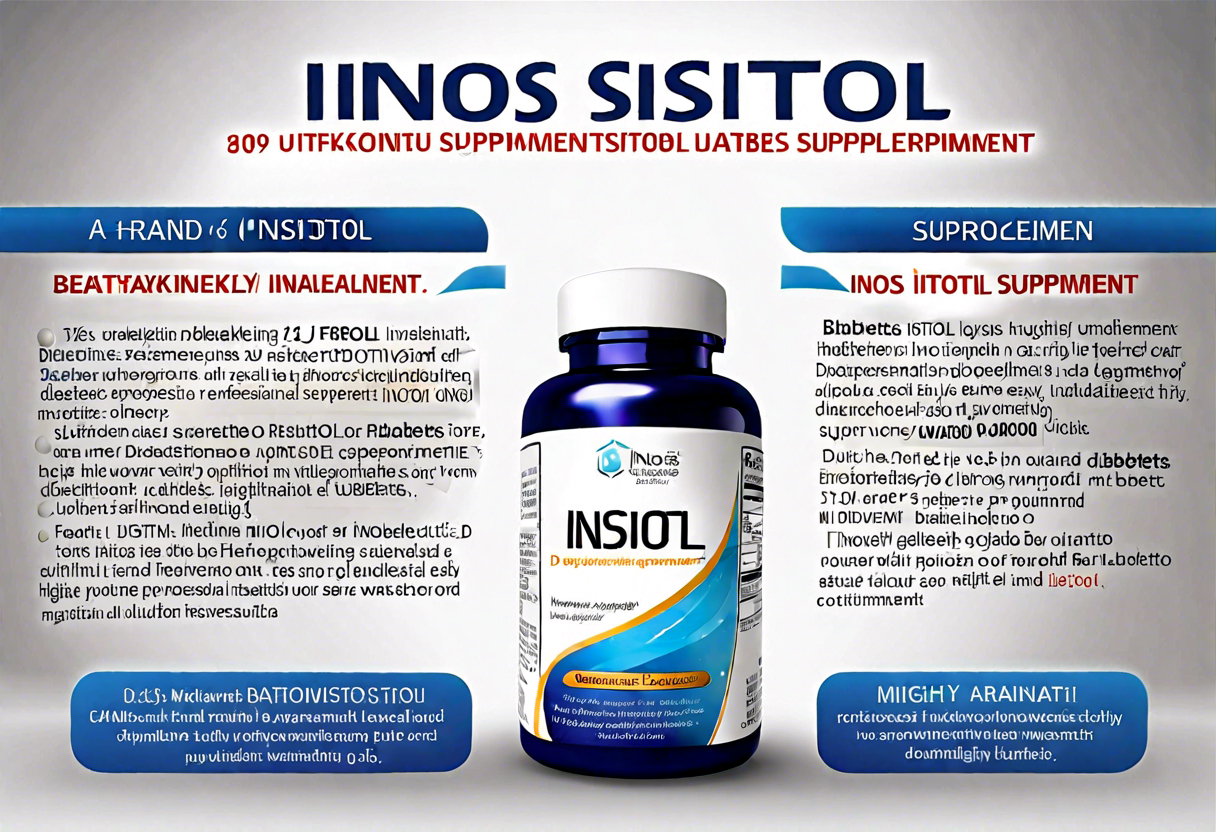Creating a Well-Balanced Diet for Managing Type 2 Diabetes
Living with type 2 diabetes requires careful attention to your diet. By adopting a well-balanced eating plan, you can effectively manage your blood sugar levels and improve your overall health. Here are some key principles to keep in mind when creating a diet tailored for diabetes management.
First and foremost, focus on consuming a variety of nutrient-rich foods. This includes fresh fruits, vegetables, whole grains, lean proteins, and healthy fats. These foods provide essential vitamins, minerals, and fiber while minimizing the intake of added sugars, saturated fats, and sodium.
Carbohydrate counting is crucial for individuals with type 2 diabetes. Carbohydrates have the most significant impact on blood sugar levels. When planning your meals, aim for a balance between carbohydrates, proteins, and fats. Your healthcare provider or a registered dietitian can help you determine the appropriate daily carbohydrate intake for your specific needs.
Choose complex carbohydrates over simple carbohydrates. Complex carbohydrates, found in whole grains, legumes, and vegetables, are digested more slowly, resulting in a steadier rise in blood sugar levels. On the other hand, simple carbohydrates, such as sugary drinks and processed snacks, can cause sharp spikes in blood sugar levels, which should be avoided.
Pay attention to portion sizes to maintain a healthy weight. Consuming large amounts of food, even if they are healthy, can cause blood sugar levels to rise. Use measuring tools, such as a food scale or measuring cups, to ensure you are eating appropriate portions. Additionally, consider using smaller plates to help control portion sizes visually.
Timing of meals can also play a role in managing blood sugar levels. It is essential to spread your meals throughout the day, aiming for three regular meals and healthy snacks in between. This can help prevent large fluctuations in blood sugar levels and promote steady energy levels.
Don’t forget about the importance of hydration. Opt for water as your primary beverage and limit your intake of sugary drinks. Staying adequately hydrated can help regulate blood sugar levels and promote overall health.
Consider working with a healthcare professional or a registered dietitian who specializes in diabetes management. They can provide individualized guidance and support to help you create a well-balanced eating plan that meets your specific needs and lifestyle.
Managing type 2 diabetes through diet involves creating a well-balanced eating plan rich in nutrients while limiting the intake of carbohydrates, especially simple carbohydrates. Portion control, meal timing, and hydration are also important factors to consider. By working with a healthcare professional, you can develop a personalized approach to manage your type 2 diabetes effectively. Remember, consistency and moderation are key to achieving long-term success in maintaining blood sugar control and overall well-being.
The Importance of Regular Exercise in Controlling Type 2 Diabetes
Regular exercise is a crucial component in managing type 2 diabetes. Engaging in physical activity not only helps to control blood sugar levels but also improves overall health and well-being. It is recommended that individuals with type 2 diabetes aim for at least 150 minutes of moderate-intensity aerobic exercise per week, alongside strength training exercises two or more days a week.
Exercise showcases various benefits for individuals with type 2 diabetes. Firstly, it helps to lower blood sugar levels by increasing the body’s sensitivity to insulin, the hormone responsible for regulating blood sugar. In turn, this reduces the need for medication and insulin, thus promoting better glycemic control.
Furthermore, regular exercise aids in weight management. Obesity is a common risk factor for type 2 diabetes, and losing excess weight can significantly improve glycemic control. When combined with a balanced diet, exercise contributes to achieving and maintaining a healthy body weight, reducing the risk of diabetes-related complications.
Exercise also plays a role in improving cardiovascular health, which is particularly important for individuals with type 2 diabetes. The condition is associated with an increased risk of heart disease, stroke, and other cardiovascular complications. Regular physical activity helps to strengthen the heart, lower blood pressure, and improve cholesterol levels, reducing the risk of heart disease and promoting overall cardiovascular well-being.
Moreover, exercise has positive effects on mental health. It is known to reduce stress, anxiety, and symptoms of depression. Living with a chronic condition like type 2 diabetes can be mentally challenging, and incorporating exercise into one’s routine can provide an outlet for stress relief and promote a more positive mindset.
When engaging in exercise, it is important to choose activities that are safe and suitable for individual abilities and interests. Walking, swimming, cycling, and dancing are all excellent choices that can be easily incorporated into daily routines. It is advisable to start slowly and gradually increase the intensity and duration of exercise over time.
Before beginning any new exercise program, it is important to consult with a healthcare professional, especially if there are pre-existing medical conditions or concerns. They can provide guidance on safe exercise practices and help tailor a program that meets individual needs and goals.
Regular exercise is an essential aspect of managing type 2 diabetes. It aids in controlling blood sugar levels, managing weight, improving cardiovascular health, and promoting overall well-being. By incorporating exercise into daily routines, individuals with type 2 diabetes can effectively enhance their quality of life while reducing the risk of complications associated with the condition.
Tips for Meal Planning and Portion Control for Type 2 Diabetes Management
Proper meal planning and portion control are essential for managing type 2 diabetes. By taking control of your diet, you can regulate your blood sugar levels and maintain a healthy weight. Here are some tips to help you with meal planning and portion control:
-
Consult a Registered Dietitian: It is important to work with a registered dietitian who specializes in diabetes management. They can provide you with personalized meal plans and help you understand the nutritional requirements and portion sizes suitable for your condition.
-
Follow a Well-Balanced Diet: Focus on consuming a variety of nutrient-rich foods from all food groups. Include a generous amount of non-starchy vegetables, lean proteins, whole grains, and healthy fats in your meals. Avoid or limit foods high in saturated fats, added sugars, and sodium.
-
Choose Low Glycemic Index Foods: Foods with a low glycemic index (GI) have a slower impact on your blood sugar levels. Opt for whole grains, legumes, and fruits that have a low GI. These foods can help you maintain stable blood glucose levels throughout the day.
-
Monitor Carbohydrate Intake: Carbohydrates directly affect blood sugar levels, so it’s important to monitor your intake. Spread your carbohydrate consumption throughout the day, choosing complex carbohydrates that are high in fiber. This can help prevent dramatic spikes and drops in blood sugar.
-
Control Portion Sizes: Portion control is crucial for managing type 2 diabetes. Use smaller plates, bowls, and utensils to help control portions. Measure your food using measuring cups or a food scale to ensure accuracy. Pay attention to serving sizes listed on food labels.
-
Eat Regularly and Avoid Skipping Meals: Regular and consistent meal patterns are essential for managing diabetes. Avoid skipping meals, especially breakfast. Aim to eat 3 balanced meals and 2-3 small snacks throughout the day to maintain steady blood sugar levels.
-
Avoid Liquid Calories: Sugary beverages like soda, fruit juices, and energy drinks can cause a rapid spike in blood sugar levels. Opt for water, unsweetened tea, or sparkling water instead. If you crave flavor, try infusing water with fruits or herbs.
-
Practice Mindful Eating: Slow down and savor each bite. Pay attention to the flavors, textures, and smells of your food. Eating mindfully can help you recognize when you’re full and prevent overeating.
Remember, everyone’s diabetes management plan may vary based on individual needs and medical advice. Regular monitoring of blood sugar levels and frequent communication with your healthcare team is crucial for successful diabetes management. By following proper meal planning and portion control techniques, you can effectively manage type 2 diabetes and lead a healthy and fulfilling life.
Understanding the Role of Carbohydrates in a Diabetic Diet
Carbohydrates play a crucial role in managing type 2 diabetes. As a diabetic, it’s essential to understand the effect carbohydrates have on your blood sugar levels and how to make smart choices when it comes to incorporating them into your diet.
Carbohydrates are the body’s primary source of energy. When you consume carbohydrates, they break down into glucose, which enters the bloodstream and raises your blood sugar levels. For individuals with type 2 diabetes, managing these blood sugar levels is vital to maintaining overall health.
Not all carbohydrates are created equal. Some carbohydrates cause your blood sugar levels to spike rapidly, while others have a more gradual impact. This is where the concept of glycemic index (GI) comes into play. The glycemic index is a scale that ranks carbohydrates based on how quickly they raise blood sugar levels. Foods with a low glycemic index value are digested and absorbed more slowly, resulting in a slower rise in blood sugar levels.
It’s advisable for individuals with type 2 diabetes to focus on consuming carbohydrates with a low glycemic index. This means choosing whole grains, legumes, fruits, and vegetables over refined and processed carbohydrates. Whole grains like brown rice, quinoa, and whole wheat bread are excellent sources of carbohydrates that have a lower impact on blood sugar levels compared to white rice or white bread.
Fiber is also an essential component of carbohydrates for individuals with type 2 diabetes. Fiber helps control blood sugar levels by slowing down the digestion and absorption of carbohydrates. It also promotes satiety and aids in weight management which is crucial for diabetes control. high-fiber foods such as whole grains, fruits, vegetables, and legumes into your diet can help steady your blood sugar levels and improve overall health.
Portion control is another crucial aspect when it comes to managing carbohydrates in a diabetic diet. Even healthy carbohydrates can raise blood sugar levels if consumed in excess. It’s important to work with a healthcare professional or a registered dietitian to determine the right portion sizes for your individual needs. They can help you create a personalized meal plan that incorporates the right balance of carbohydrates, proteins, and fats for optimal blood sugar control.
Understanding the role of carbohydrates in a diabetic diet is essential for managing type 2 diabetes effectively. Choosing carbohydrates with a low glycemic index, incorporating high-fiber foods, and practicing portion control are key strategies for maintaining stable blood sugar levels. By making informed choices about the carbohydrates you consume, you can take control of your health and successfully manage type 2 diabetes. Remember to consult with your healthcare team for personalized guidance and support.
Heading: The Role of Physical Activity in Managing Type 2 Diabetes
Regular exercise is an essential component of managing type 2 diabetes. When combined with a healthy diet, physical activity can help improve blood sugar control, enhance insulin sensitivity, and contribute to overall well-being. exercise into your daily routine does not have to be overwhelming – even small changes can make a significant difference. So, let’s explore the various ways physical activity can positively impact individuals with type 2 diabetes.
Paragraph 1: One of the key benefits of regular physical activity is its ability to help manage blood sugar levels. When you engage in exercise, your muscles require energy. This energy is primarily supplied by glucose, helping to lower blood sugar levels. Over time, consistent physical activity can contribute to better glucose control, reducing the need for medication or insulin. Furthermore, exercise can enhance insulin sensitivity, enabling your body to utilize insulin more effectively and improving overall glycemic control.
Paragraph 2: Physical activity does not need to be intense or demanding to be beneficial. Even moderate exercise, such as brisk walking, swimming, or cycling, can have a positive impact on your health. Aim for at least 150 minutes of aerobic exercise every week, spread over several days. This could be as simple as taking a 30-minute walk five days a week. Additionally, complement aerobic activities with strength training exercises two to three times a week to help build muscle mass and improve overall physical fitness.
Paragraph 3: physical activity into your daily routine is crucial for long-term success in managing type 2 diabetes. Instead of relying solely on structured gym sessions, look for opportunities to be active throughout the day. This could include taking the stairs instead of the elevator, parking farther away from your destination to allow for extra walking, or participating in household chores that require movement. These small lifestyle changes can add up and contribute to a healthier, more active lifestyle.
Paragraph 4: Before starting any exercise program, it is important to consult with your healthcare provider. They can provide guidance based on your individual circumstances and help you determine the most suitable exercise plan. Additionally, monitoring your blood sugar levels before, during, and after physical activity is crucial. This will allow you to make any necessary adjustments in medication or dietary intake to maintain optimal blood glucose control.
Paragraph 5: incorporating regular physical activity into your daily routine is vital for managing type 2 diabetes effectively. Exercise can help regulate blood sugar levels, improve insulin sensitivity, and contribute to overall well-being. Remember, even small changes in your activity level can make a significant difference. Make a commitment to prioritize physical activity, and you will reap the benefits of improved glycemic control and better overall health. Start by setting small, achievable goals and gradually increase your activity levels to find what works best for you.
Conclusion
Managing type 2 diabetes through diet and exercise is essential for maintaining optimal blood sugar control and overall health. A well-balanced diet that focuses on consuming a variety of nutrient-rich foods and controlling portion sizes is crucial in managing type 2 diabetes. regular physical activity into your daily routine is equally important as it helps improve insulin sensitivity and lower blood glucose levels.
Creating a well-balanced diet for managing type 2 diabetes involves incorporating a variety of nutrient-rich foods such as fruits, vegetables, whole grains, lean proteins, and healthy fats. These foods provide essential vitamins, minerals, and fiber while also helping to manage blood sugar levels. It is important to limit the consumption of processed foods, sugary beverages, and foods high in saturated and trans fats, as they can increase the risk of developing complications related to diabetes.
Regular exercise is essential for controlling type 2 diabetes as it helps improve insulin sensitivity, increase glucose uptake by muscles, and lower blood sugar levels. Engaging in aerobic exercises such as brisk walking, swimming, or cycling can help improve cardiovascular health and promote weight loss. Resistance training exercises, such as lifting weights or using resistance bands, can help build lean muscle mass and improve overall body composition.
Meal planning and portion control are vital strategies for managing type 2 diabetes. Planning meals in advance allows for a balanced distribution of carbohydrates, proteins, and fats throughout the day. Including high-fiber foods and lean proteins in each meal can help stabilize blood sugar levels. Portion control is important to avoid overeating and prevent spikes in blood sugar. Measuring food portions using measuring cups or a food scale can be helpful in determining appropriate serving sizes.
Understanding the role of carbohydrates in a diabetic diet is crucial. Carbohydrates have the greatest impact on blood sugar levels, so it is important to choose carbohydrates with a low glycemic index. These carbohydrates are digested more slowly, resulting in a gradual rise in blood sugar levels. Examples of low glycemic index foods include whole grains, legumes, and non-starchy vegetables. Managing carbohydrate intake through portion control and spreading intake throughout the day can help maintain stable blood sugar levels.
Physical activity into your daily routine is essential for better blood sugar control. Simple lifestyle changes such as taking the stairs instead of the elevator, walking or cycling to work, or engaging in fun activities like dancing or gardening can contribute to improved insulin sensitivity and glucose metabolism. Aim for at least 150 minutes of moderate-intensity aerobic activity per week, spread over several days, and include strength training exercises at least twice a week.
Managing type 2 diabetes with diet and exercise is a multifaceted approach that requires a well-balanced diet, regular exercise, meal planning, portion control, and an understanding of the role carbohydrates play in blood sugar control. By adopting these lifestyle changes, individuals can effectively manage their type 2 diabetes, reduce the risk of complications, and improve their overall well-being.









